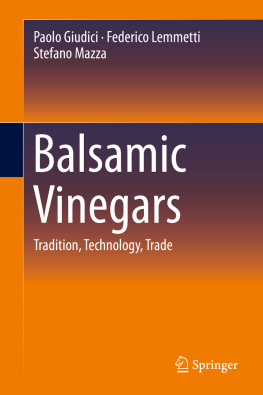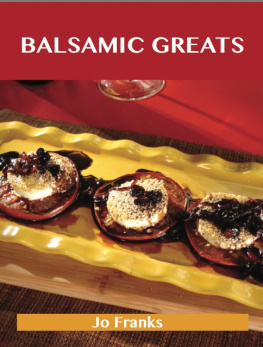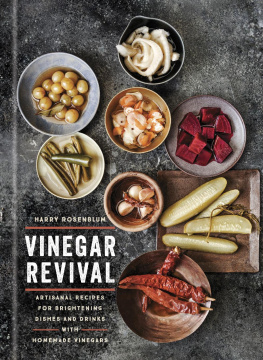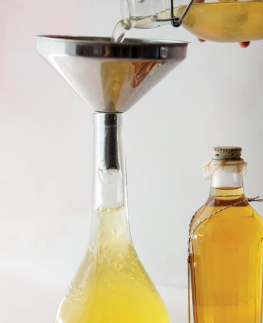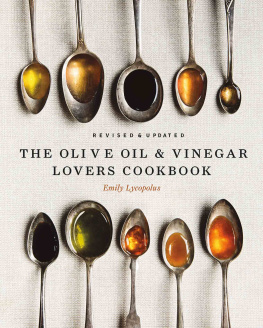1. Vinegar: Definition, Diffusion, and Uses
The history of microbial biotransformation is closely associated with vinegar production, which dates back to around 2000 years BC. However, among fermented foods, vinegar has always been considered a poor commodity because it is not a food, lacks significant nutritional value, and it is produced from the transformation of richer and more nutritive fermented foods, such as wine and honey. Vinegar is a flavouring agent but also a preservative, and in some countries (Japan, China, and Korea) it is considered a healthy drink.
Vinegar production is a two step fermentation process, first by yeast and then by acetic acid bacteria, starting from almost any fermentable carbohydrate source: apples, pears, grapes, honey, syrups, cereals, hydrolysed starches, beer, and wine. With a few exceptions only, vinegar is an inexpensive commodity since low-cost raw materials are generally used for its production, like, for example, sub-standard fruits, seasonal agricultural surpluses, by-products from food processing, and fruit wastes.
Spirit vinegars are obtained directly through acetic oxidation of the ethanol from the distillation of fermented pulps and in some countries from petrochemical ethanol. Pyroligneous liquor, collected during wood carbonisation, is also called vinegar and it is used as an agricultural raw material, animal health product, cosmetic ingredient, and traditional medicine in Japan and East Asia (Mu et al. ).
Another subset includes flavoured vinegars, also known as herbal or fruit vinegars. Herbal vinegars consist of wine vinegars or white distilled vinegars, flavoured with garlic, basil, tarragon, cinnamon, cloves, nutmeg, or other herbs. Fruit-flavoured vinegars are wine and white vinegars sweetened with fruit or fruit juice to produce a characteristic sweet and sour taste. In these cases the fruit name does not indicate the raw material used for vinegar fermentation but rather the flavour added to achieve a specific taste and other characteristic features.
Some vinegars are very expensive and they are produced from regional and local foodstuffs according to longstanding traditions, such as Traditional Balsamic Vinegar of Modena from Italy, Sherry vinegar from Spain, Oxos from Greece, and Shanxi mature vinegar from China.
1.1 Legal Definition and Composition
Vinegar production is regulated by an extensive set of statutes and the definition of vinegar varies from a country to another. The FAO/WHO defines vinegar as any liquid, fit for human consumption, produced exclusively from suitable products containing starch and/or sugars by the process of double fermentation, first alcoholic and then acetous. The residual ethanol content must be less than 0.5 % in wine vinegar and less than 1 % in other vinegars. (Joint FAO/WHO Food Standards Programme). In the USA, the Food and Drug Administration (FDA) requires that vinegar products must have a minimum acidity of 4 g per 100 ml, while in Australia the lower limit is 4 g per 100 g (FSANZ 2.10.1). This qualification ensures a minimum strength for vinegars sold in retail. There are currently no standards that identity vinegar; however, the FDA has established Compliance Policy Guides that the Agency applies for the labelling of vinegars, such as cider, wine, malt, sugar, spirit, and vinegar blends (FDA/ORA CPG 7109.22).
European countries have regional standards for vinegar produced or sold in specific areas. Unlike US law, the EU has established a threshold both for acidity and ethanol content. Vinegar of X is a general definition used for products with a minimum of 5 % (w/v) of acidity and a maximum of 0.5 % (v/v) of ethanol. Wine vinegar is obtained exclusively by acetous fermentation of wine, and it has at least 6 % of acidity (w/v) and 1.5 % (v/v) of ethanol (Regulation EC 479/2008). Table shows the ranges of acidity and ethanol in some common vinegars.
Table 1.1
Acidity and residual ethanol content in various types of vinegars
Vinegar | Acidity (% w/v) | Ethanol (% v/v) |
|---|
Malt vinegar | 4.35.9 |
Cider vinegar | 3.99.0 | 0.03 |
Wine vinegar (semi-continuous process) | 4.47.4 (814) | 0.050.3 |
Rice vinegar | 4.24.5 | 0.68 |
Chinese rice vinegar | 6.810.9 |
Cashew vinegar | 4.62 | 0.13 |
Coconut water vinegar | 8.28 | 0.42 |
Mango vinegar | 4.92 | 0.35 |
Sherry vinegar | 7.0 |
Pineapple vinegar | 5.34 | 0.67 |
Balsamic vinegar of Modena | >6.00 | <1.5 |
Spirit vinegar | <20 |
In Europe vinegar is considered a flavouring or preservative food ingredient and, with few exceptions, its taste is generally sharp and sour. On the other hand, in Asia and Africa, vinegar is also a drink with a less sour taste. A lot of sweetened fruit vinegars characterised by low acidity and aromatic flavours are very popular in China and East-Southeast Asia. In Africa some fermented beverages can spontaneously acidify to produce alcoholic-acetous products, which are very difficult to classify as either alcoholic beverages or vinegars. Similarly, in Japan, black rice vinegar is usually diluted with fruit juice and consumed daily as a healthy tonic drink, representing 20 % of the Japanese vinegar market with a value of 21.46 billion yen in the year 2004. In some western countries, mainly the USA and Canada, apple cider vinegar is an old folk remedy claimed to be beneficial for treating a long list of diseases and it is consumed mixed with fruit juice. In the traditional wine-producing countries of Europe, it is very easy to differentiate between wine and vinegar, since the respective names are well established both historically and legally, with a precise definition for each. Wine can have a maximum of 1.2 g/l of acetic acid and, in all cases, the acetic acid content must be less than 1 % of the ethanol content. Vinegar must have a minimum of 6 % of titratable acidity and less than 1.5 % (v/v) of residual ethanol. In China, the word vinegar indicates products obtained from both fermentation and artificial processes, according to the Chinese National Standard definitions (CNS 14834, N5239 ).
Table 1.2
Vinegars with geographical indications (GI)
Dossier number | Country | Name | App type | Date | Status |
|---|
IT/PDO/0017/1565 | Italy | Aceto Balsamico Tradizionale di Modena (ABTM) | PDO | 20/04/2000 | Registered |
IT/PDO/0017/1566 | Italy |

